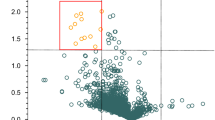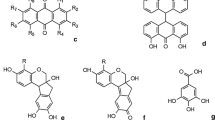Abstract
Volatile organic compounds emitted from historical books made from cotton/linen rag and wood pulp paper have been studied. Different profiles were obtained using different solid-phase microextraction (SPME) fibres to access the compounds involved in the decomposition reactions occurring in cotton/linen rag and wood pulp paper upon natural ageing and precocious/accelerated degradation. Contact headspace solid-phase extraction coupled with gas chromatography/time-of-flight mass spectrometry (GC-TOF-MS) was improved as a non-destructive methodology for the analysis of historical books. Potential markers of cellulose degradation—linear hydrocarbons, linear aldehydes, and 2-furfural—together with potential markers of cotton/linen rag paper (isopropylic esters) were identified. Chiral analysis (SPME-c-GC-TOF-MS) showed that only the enantiomer (S)-2-ethyl-1-hexanol is present as an emanation compound in both types of paper. Validation studies for a larger number of books are being done.

Portuguese old books made from cotton/linen rag paper.












Similar content being viewed by others
References
HQ PaperMaker (2004) HQ Group Company Limited Chiang Mai Thailand. http://www.hqpapermaker.com/paper-history/. Accessed 12 October 2009
Lewin M (ed) (2007) The handbook of fibre chemistry, 3rd edn. CRC, Boca Raton, p 574, Cpt 9
Canadian Conservation Institute (2008) Paper documents and news paper clippings. http://www.preservation.gc.ca/howto-comment/articles/paper-papier-eng.asp. Accessed 1 October 2009
Davidson RS (1996) The photodegradation of some naturally occurring polymers. J Photochem Photobiol B 33:3–25
Bell DJ (1932) Wood cellulose: the depolymerised celluloses of wood and cotton. Biochem J 26:598–608, Accessed 16 October 2009
Dupont A-L, Egasse C, Morin A, Vasseur F (2007) Comprehensive characterisation of cellulose- and lignocellulose- degradation products in aged papers: capillary zone electrophoresis of low-molar mass organic acids, carbohydrates, and aromatic lignin derivatives. Carbohydr Polym 68:1–16
Strlič M, Thomas J, Trafela T, Cséfalvayová L, Cigić IK, Kolar J, Kolar J, Cassar M (2009) Material degradomics: on the smell of old books. Anal Chem 81:8617–8622
Buchbauer G, Jirovetz M, Wasicky M, Nikiforov A (1995) On the odour of old books. J Pulp Pap Sci 21:398–400
Lattuati-Derieux A, Bonnasies-Termes S, Lavédrine B (2004) Identification of volatile organic compounds emitted by a naturally aged book using solid-phase microextraction/gas chromatography/mass spectrometry. J Chromatogr A 1026:9–18
Strlič M, Cigić IK, Kolar J, De Bruin G, Pihlar B (2007) Non-destructive evaluation of historical paper based on pH estimation from VOC emissions. Sensors 7:3136–3145
Ai J (1997) Solid phase microextraction for quantitative analysis in non-equilibrium situations. Anal Chem 69:1230–1236
Ai J (1997) Headspace solid phase microextraction. Dynamics and quantitative analysis before reaching a partition equilibrium. Anal Chem 69:3260–3266
Gaspar EM, Lucena AF, Duro da Costa J, Chaves das Neves H (2009) Organic metabolites in exhaled human breath—a multivariate approach for identification of biomarkers in lung disorders. J Chromatogr A 1216:2749–2756
Shahani CJ, Harrison G (2002) Spontaneous formation of acids in the natural aging of paper. In: Daniels V, Donithorne A, Smith P (eds) Works of art on paper, books, documents and photographs. Techniques and conservation. Congress of the International Institute for Conservation Int. Inst. For Conservation, London, pp 189–192
Łojewska J, Miśkowiec ŁT, Proniewicz LM (2005) Cellulose oxidative and hydrolytic degradation: in situ FTIR approach. Polym Degrad Stab 88:512–520
Lattuati-Derieux A, Bonnasies-Termes S, Lavédrine B (2006) Characterisation of compounds emitted during natural and artificial ageing of a book. Use of headspace-solid-phase micro-extraction/gas chromatography/mass spectrometry. J Cult Herit 7:123–133
David SK, Pailthorpe MT (1999) Classification of textile fibres: production, structure and properties. In: Robertson J, Grieve M (eds) Forensic examination of fibres. Taylor and Francis, Philadelphia, p 12
World of Molecules (2009) http://worldofmolecules.com/materials/cotton.htm. Accessed 18 October 2009
Acknowledgements
The authors express their gratitude to Prof. H. Chaves das Neves for interest, help and criticism given to this work. EG expresses a deep gratitude to her friend Eng. Luiz de Aguiar Câmara for the unconditional willingness of giving some of his valuable historical books for this study.
Author information
Authors and Affiliations
Corresponding author
Rights and permissions
About this article
Cite this article
Gaspar, E.M., Santana, J.C., Lopes, J.F. et al. Volatile organic compounds in paper—an approach for identification of markers in aged books. Anal Bioanal Chem 397, 369–380 (2010). https://doi.org/10.1007/s00216-010-3520-3
Received:
Revised:
Accepted:
Published:
Issue Date:
DOI: https://doi.org/10.1007/s00216-010-3520-3




